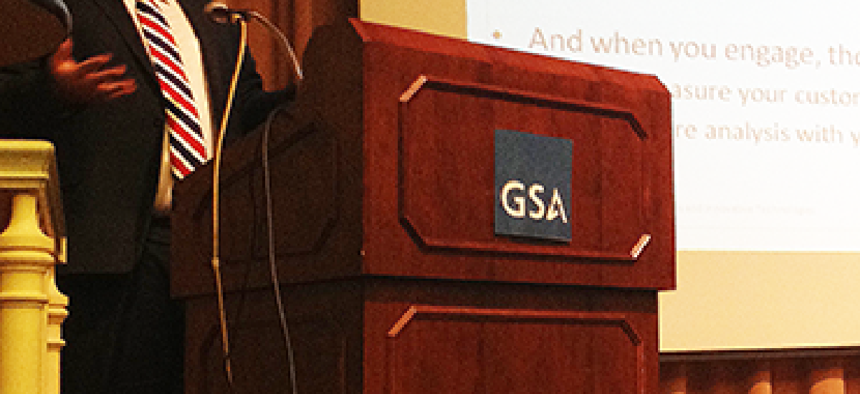Summit stresses value of metrics in social media

Agencies are using social media tools in increasingly creative ways; measuring their impact is the next needed step.

'We are unlocking next generation of government data for you to use and embed in your services.' -- Justin Herman, new media manager at the GSA’s Center for Excellence in Digital Government. (FCW photo by Frank Konkel)
Nearly every agency makes use of social media nowadays, but the next step in social government is for feds to evaluate the impact and value of their social media efforts.
That step may have come Feb. 19 at the Social Government Summit in Washington, D.C., at which a General Services Administration-led interagency working group unveiled two new initiatives that could help agencies unlock the full power of their social data.
All about metrics
The first initiative is a new baseline for social media metrics in federal agencies, providing agencies a sort of "how-to" for metrics consisting of four parts: Why metrics matter; how to use them; baseline social media metrics by category; and resources, training and feedback options.
Designed under the White House’s Digital Government Strategy, the metrics initiative focuses on 10 total metrics under seven major social media categories for analysis: Breadth, depth, direct engagement, loyalty, customer experience, campaigns and strategic outcomes.
"We are unlocking next generation of government data for you to use and embed in your services," said Justin Herman, new media manager at the GSA’s Center for Excellence in Digital Government, speaking to an audience composed largely of federal employees and social media experts.
Herman noted that the while recommendations in the metrics initiative put forth by the Federal Social Media Community of Practice are not mandatory for agencies to follow, the techniques, insights, guidance and tools outlined or provided within it are all free. That means using them comes with no cost, an attractive point for agencies that don’t have extra cash in their budgets, Herman said. Others, such as the National Institutes of Health, are actively shopping for data analytics tools to maximize their social media outreach.
A more detailed look at deeper social media measurements allowed under the metrics initiative can be found on a blog post outlining the initiative. A few examples from the post include:
• Percentage growth of target communities: Not just how big your community is, but how much is it growing?
• Conversions: Are people clicking the link in your tweet and consuming more content?
• Loyalty: Are people coming back to your content after the first visit?
• Sentiment analysis: Are people saying generally positive, negative, or neutral things about your program?
• Customer service: Do you have benchmarks for responding to your customers in a timely way?
A new API
GSA unveiled an application programming interface (API) from the Federal Social Media Registry. According to the blog post, the Registry "is a shared service that allows agencies to maintain an official inventory of all their social media accounts from over 20 different platforms, including Facebook, Twitter, and YouTube."
The API allows users to open up content from government social media accounts, searchable by agency, topic or language, and that content can be "mashed up," Herman said, across an agency, topic or by keyword tags. The customizable feature here is particularly important, Herman said, and it applies not only to getting the word out about an agency’s latest announcement, but also to areas like disaster relief, where social media is rapidly playing an integral role.
"Imagine a world where if a storm hits, you (as a citizen) receive instant, verified information from public services," Herman said. "You can engage directly with its source, and it is customizable based on needs, without having to navigate bureaucracy, embedded where you are."
A "rock-star" group of innovators
The social media initiatives were delivered amongst presentations from some of the most innovative federal agencies in social media.
According to Sheila Campbell, director of GSA’s Center for Excellence in Digital Government, it was a "rock-star" group, composed of speakers from NASA, NIH, the United States Geological Survey, the Office of the Director of National Intelligence, U.S. National Archives and the Departments of Education and Defense.
Among the highlights: USGS’ Tweet Earthquake Detection (TED) program, which uses social media to get a "heads up" on earthquakes; NASA’s 480 social media accounts, including those of 43 astronauts and one particularly famous Mars rover; and the Education Department using Twitter to answer college-bound student’s questions.






